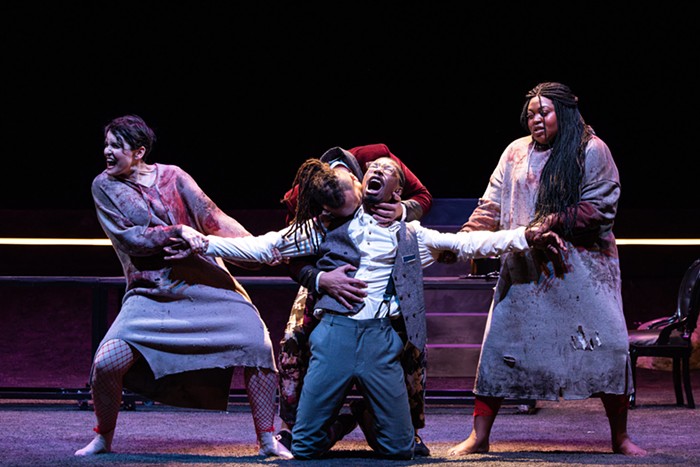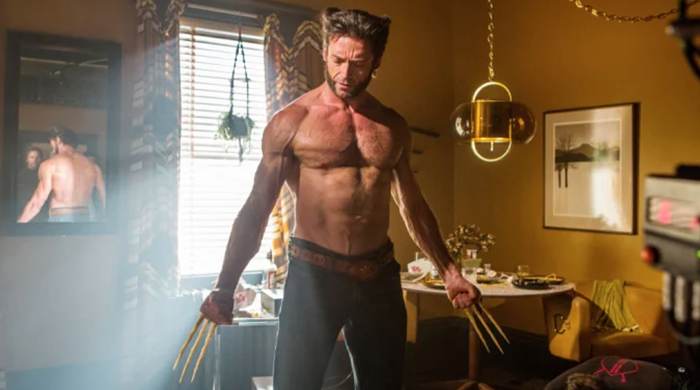
Dance is having a high art moment right now. From Beyoncé channeling Pearl Primus and Loie Fuller in The Carters’ “APES**T" music video to the complexity of Sherrie Silver's masterful choreography for “This is America, to Pose's groundbreaking visual storytelling bringing underground ballroom culture to a whole new generation, underground and avant garde dance is being embraced by popular and high culture in a way we haven't seen before.
So it seems appropriate that the Time Based Arts Festival’s opening party and dance battle, The Beautiful Street, set the tone for next eleven days by centering perspectives on those historically marginalized from high art canon.
Curators, Katie Janovec, Brandon Harrison and Jesus Rodales organized The Beautiful Street to represent and contextualize a wide spectrum of 20th century urban POC-originated dance styles. Personal and academic, The Beautiful Street elevated dance’s important—but often underrepresented—status as a performance art.
Harrison, aka Hydrangea Strangea, the father of the kiki house House of Flora and a member of the legendary House of Mizrahi, emceed The Beautiful Street in casual, summery fashions. After a cipher battle—where the winner won the chance to compete in The Beautiful Street—Harrison introduced a historical revue of dance style.

Garrett Crawford, aka Lock Static, performed locking, Decimus Yarbrough performed house, JuJu Nikz performed waacking, Salvador Ledezma aka Yen Boogie performed popping, Daniel Girón (Mizrahi/Ada) performed vogue fem, Dae Dae Middleton aka Deadshot performed krump, and Alia Lux performed dancehall. Audience members’ cheers enhanced the performance as energy exchange. In one moment, a dancer’s fellow troupe rushed the stage to celebrate with him—a spontaneous moment of unbridled joy that resonated well into the evening.
All of these styles share a common belief that dance is an expression of trauma recovery, joy, and individuality rather than an expression of sinful desire—as colonizing Christian churches teach.
After the revue, Harrison directed the audience from the main stage to the wood panel dance floor where the cipher battle took place. Harrison introduced and seated the Seven to Smoke battle’s judges: Grant Beegle, Conrad Kaczor aka Sleepy Tut, and Tracey Wong. Theirs was the difficult job of calling winner and ties.

Competing back-to-back, contestants Tyler Barker aka Kid Avenue, Chris Moua, Alfred Trinidad, DonnaMation, Bouton Volonté, Brad Quiseng, and Robin Rojas aka Protoman demonstrated (in a minute or less) their adept musicality, versatility, virility, aggression and control.
Volonté appeared to be the crowd favorite, voguing and dipping in a way that fully realized their 360 degree audience. When the crowd booed their first loss, Harrison reminded those assembled to maintain positivity and support the judges’ decisions. Ultimately, Protoman smoked the competition, demonstrating intricate footwork and masterful bodily manipulation attuned to each song. He, the judges, and the other dancers were gracious in victory, and returned the dance floor to the audience for a party where all styles thrived.

Attendees wore everything from upscale urban designs to Burning Man leisurewear, and nothing seemed out of place. Even people with accessibility needs looked accommodated. The Beautiful Street was a triumphant moment of escape from the onslaught of horror that is the reemergence of American fascism, and a celebration elevating Black and POC perspectives through dance.
We'll be blogging about TBA 2018 every day of the fest! Keep up with us at: portlandmercury.com/tba


















